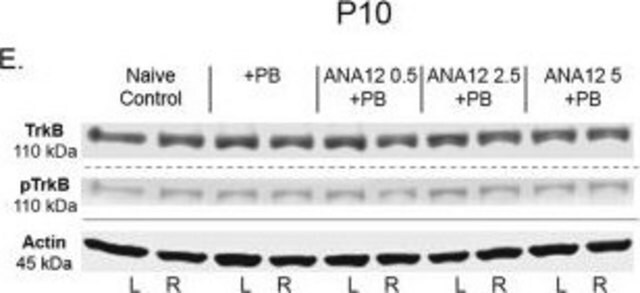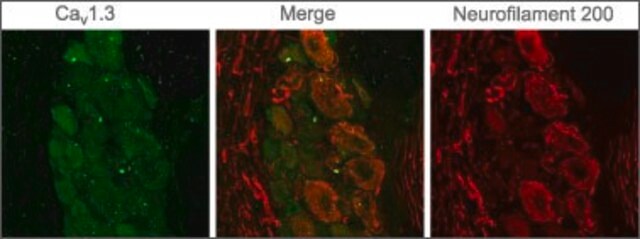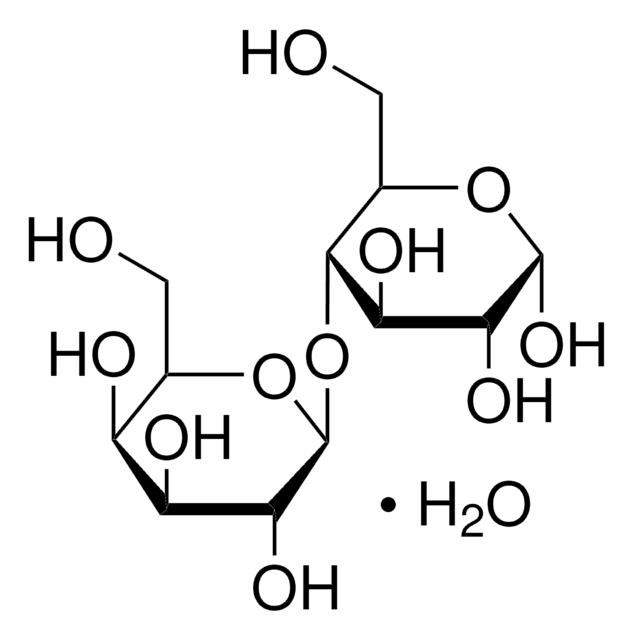추천 제품
생물학적 소스
mouse
Quality Level
결합
unconjugated
항체 형태
ascites fluid
항체 생산 유형
primary antibodies
클론
2G11, monoclonal
형태
buffered aqueous solution
분자량
antigen 60-80 kDa (glycosylated form)
종 반응성
pig, mouse, rabbit, rat, bovine, ferret, canine
기술
immunohistochemistry (frozen sections): suitable
indirect immunofluorescence: 1:2,000
western blot (chemiluminescent): 1:4,000
동형
IgG1
UniProt 수납 번호
배송 상태
dry ice
저장 온도
−20°C
타겟 번역 후 변형
unmodified
유전자 정보
mouse ... Atp4b(11945)
rat ... Atp4b(24217)
일반 설명
The H+/K+-ATPase is a gastric proton pump that is a member of the P-type cation-transporting adenosine 5′-triphosphatase (ATPase) family. H+/K+-ATPase consists of a large transmembrane, catalytic α subunit, that contains sites for ATP binding and phosphorylation. This ATPase also has a smaller glycoprotein (β) subunit which may play a role in maintaining the structural and functional integrity of the complex. Mouse monoclonal anti-H+/K+ ATPase (β subunit) binds to H+/K+-ATPase β subunit in cow, dog, pig, rabbit, mouse, ferret and rat tissues. By immunoblotting, the antibody detects various forms of the β subunit, including a 60-80kDa glycosylated protein, a 52kDa β subunit precursor and the 34kDa core peptide.
The antibody reacts with various forms of the H+/K+ ATPase β subunit. It binds an epitope within amino acids 1-13 or 15-28 located on the cytoplasmic side of the β subunit. The antibody has been shown to inhibit the enzymatic activity of the H+/K+-ATPase and to alter the affinity of the cytoplasmic K+ binding site. It may be used to localize and detect H+/K+ ATPase β subunit.
면역원
core 34 kDa H+/K+ ATPase β subunit from deglycosylated pig gastric microsomes.
애플리케이션
Applications in which this antibody has been used successfully, and the associated peer-reviewed papers, are given below.
Western Blotting (1 paper)
Western Blotting (1 paper)
Mouse monoclonal anti-H+/K+ ATPase (β subunit) antibody can be used for indirect immunofluorescence (1:2,000), chemiluminescent western blot (1:4,000), and immunohistochemical applications.
물리적 형태
Solution in phosphate buffered saline containing 0.05% sodium azide.
면책조항
Unless otherwise stated in our catalog or other company documentation accompanying the product(s), our products are intended for research use only and are not to be used for any other purpose, which includes but is not limited to, unauthorized commercial uses, in vitro diagnostic uses, ex vivo or in vivo therapeutic uses or any type of consumption or application to humans or animals.
적합한 제품을 찾을 수 없으신가요?
당사의 제품 선택기 도구.을(를) 시도해 보세요.
Storage Class Code
10 - Combustible liquids
WGK
WGK 1
Flash Point (°F)
Not applicable
Flash Point (°C)
Not applicable
개인 보호 장비
Eyeshields, Gloves, multi-purpose combination respirator cartridge (US)
시험 성적서(COA)
제품의 로트/배치 번호를 입력하여 시험 성적서(COA)을 검색하십시오. 로트 및 배치 번호는 제품 라벨에 있는 ‘로트’ 또는 ‘배치’라는 용어 뒤에서 찾을 수 있습니다.
Ivana Novak et al.
The Journal of biological chemistry, 286(1), 280-289 (2010-10-28)
Pancreas secretes fluid rich in digestive enzymes and bicarbonate. The alkaline secretion is important in buffering of acid chyme entering duodenum and for activation of enzymes. This secretion is formed in pancreatic ducts, and studies to date show that plasma
Salim M A Bastaki et al.
Molecular and cellular biochemistry, 341(1-2), 43-50 (2010-03-20)
Gastric pathology is a common complication in diabetes mellitus. The aim of the study was to evaluate the functions and morphological changes of the parietal cells of the rat stomach after streptozotocin-induced diabetes. Diabetes mellitus was induced in Wistar rats
D C Chow et al.
The American journal of physiology, 265(6 Pt 1), C1562-C1570 (1993-12-01)
The gastric proton pump, H(+)-K(+)-ATPase, is composed of alpha- and beta-subunits. The 95-kDa alpha-subunit has been referred to as the catalytic subunit containing sites for ATP binding and phosphorylation. The beta-subunit is a glycoprotein with a 34-kDa core peptide that
Marco Tozzi et al.
Cancers, 12(3) (2020-03-14)
Pancreatic duct cells are equipped with acid/base transporters important for exocrine secretion. Pancreatic ductal adenocarcinoma (PDAC) cells may utilize such transporters to acidify extracellular tumor microenvironment, creating a niche favoring cell proliferation, fibrosis and resistance to chemotherapy-all contributing to the
Jing Wang et al.
PloS one, 10(5), e0126432-e0126432 (2015-05-21)
The mechanism by which pancreas secretes high HCO3- has not been fully resolved. This alkaline secretion, formed in pancreatic ducts, can be achieved by transporting HCO3- from serosa to mucosa or by moving H+ in the opposite direction. The aim
자사의 과학자팀은 생명 과학, 재료 과학, 화학 합성, 크로마토그래피, 분석 및 기타 많은 영역을 포함한 모든 과학 분야에 경험이 있습니다..
고객지원팀으로 연락바랍니다.







